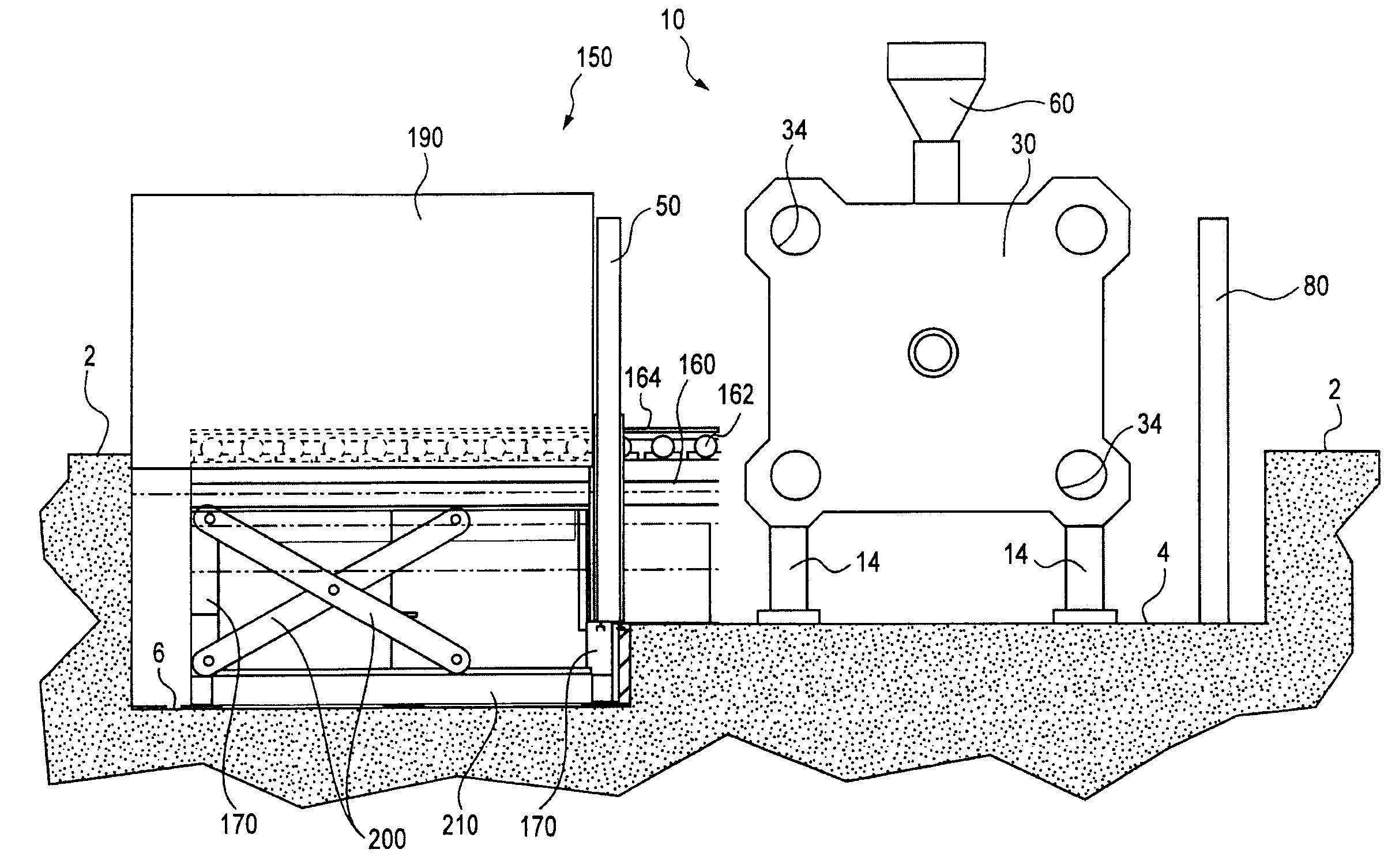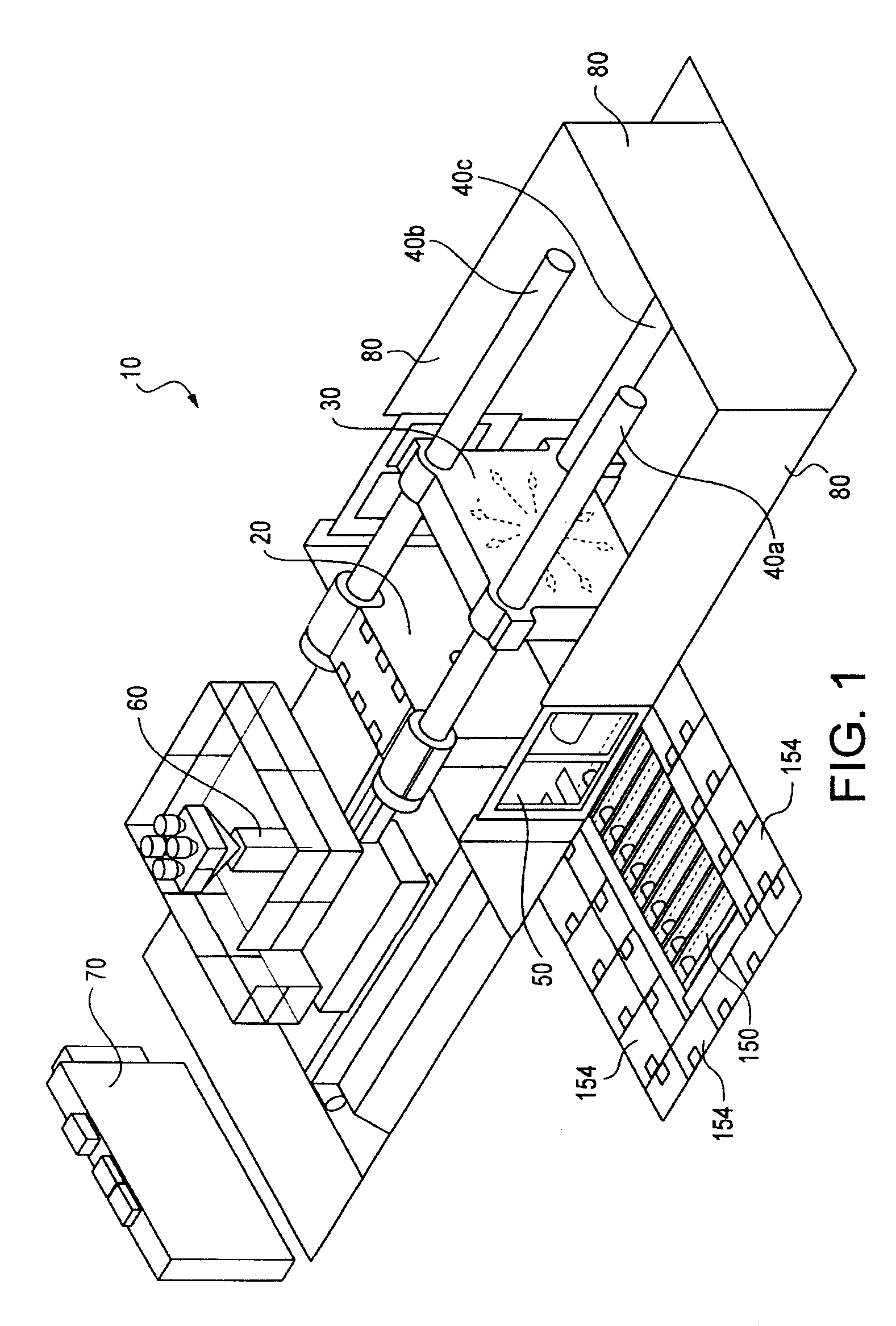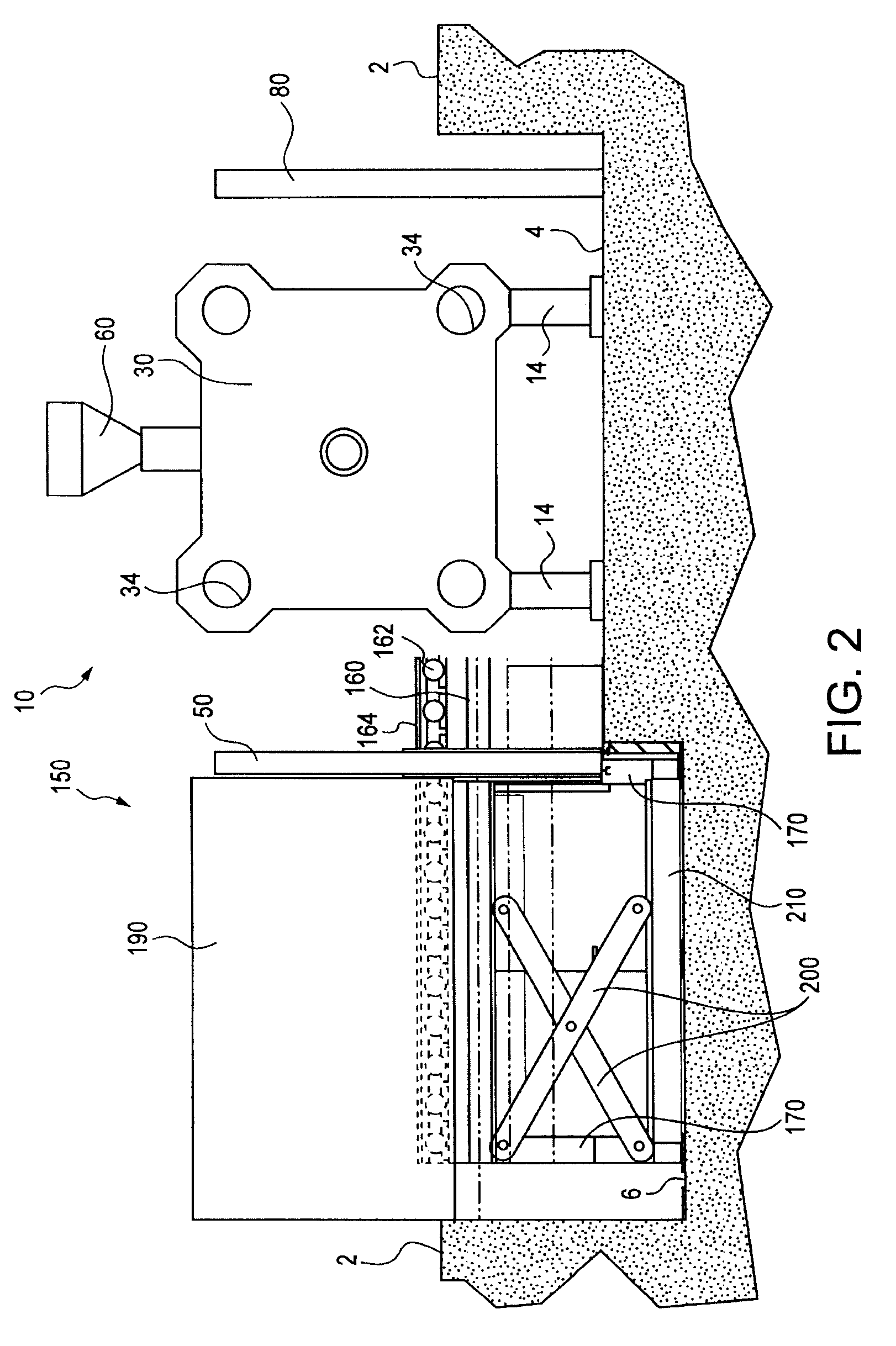Hidden mold transfer assembly
- Summary
- Abstract
- Description
- Claims
- Application Information
AI Technical Summary
Benefits of technology
Problems solved by technology
Method used
Image
Examples
Embodiment Construction
[0042]As described herein, the present invention provides a hidden mold transfer assembly that is preferably at least partially disposed within a recessed pit or region alongside an injection molding press. The preferred embodiment mold transfer assembly is positionable between two states, a retracted or stowed state in which the assembly is disposed entirely below floor level, and an extended state in which the assembly is in a raised position and able to receive a mold set or other mold components from the interior of the press. Numerous other features and variations of the present invention assembly and related methods are described herein.
[0043]The injection molding presses with which the present invention hidden mold transfer assembly can be used, are generally of the larger, hydraulic or hybrid, i.e. electric and hydraulic, type. Hydraulic presses in the range of from 200 tons to 6,000 tons, or more, are typically those with which the preferred embodiment mold transfer assembl...
PUM
| Property | Measurement | Unit |
|---|---|---|
| Size | aaaaa | aaaaa |
| Height | aaaaa | aaaaa |
Abstract
Description
Claims
Application Information
 Login to View More
Login to View More - R&D
- Intellectual Property
- Life Sciences
- Materials
- Tech Scout
- Unparalleled Data Quality
- Higher Quality Content
- 60% Fewer Hallucinations
Browse by: Latest US Patents, China's latest patents, Technical Efficacy Thesaurus, Application Domain, Technology Topic, Popular Technical Reports.
© 2025 PatSnap. All rights reserved.Legal|Privacy policy|Modern Slavery Act Transparency Statement|Sitemap|About US| Contact US: help@patsnap.com



